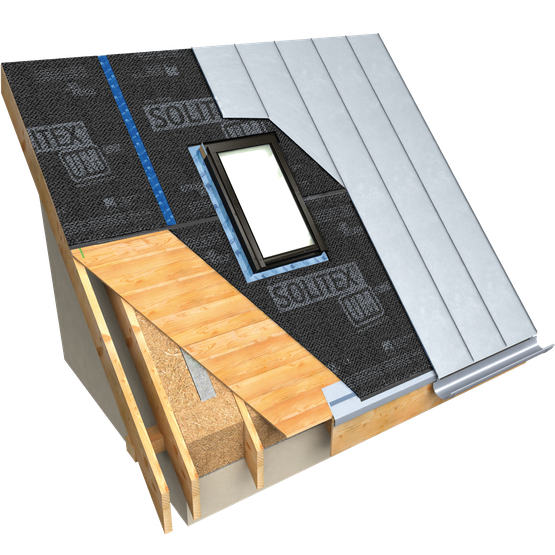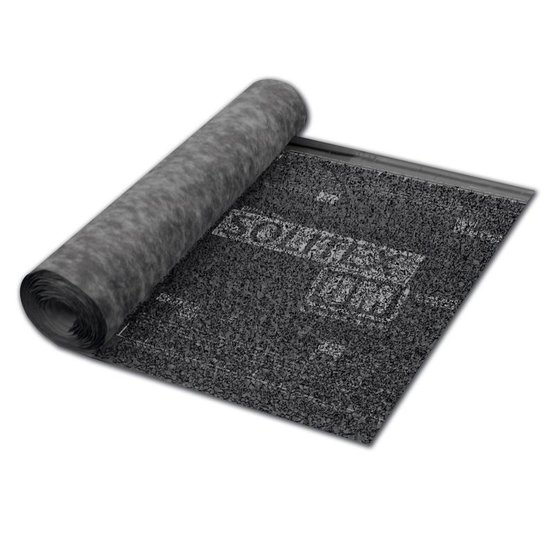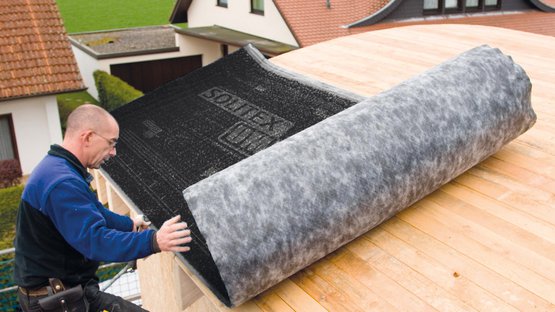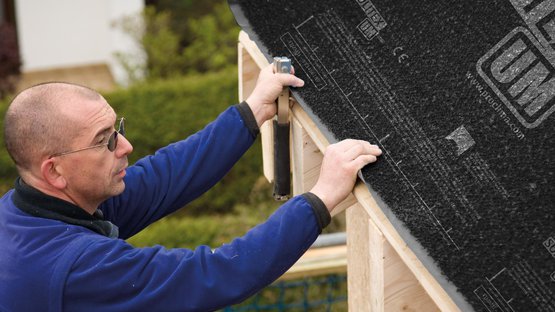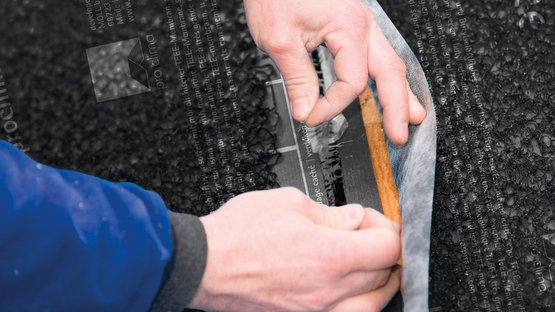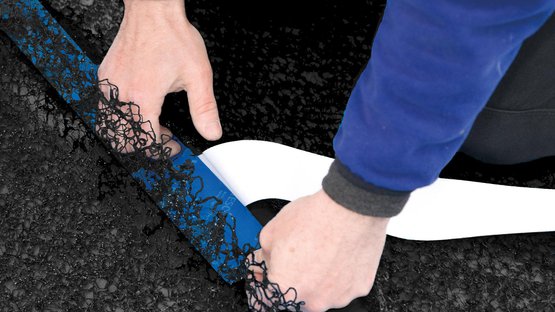Roofing underlay membrane with 3D separation mesh and self-adhesive strips
Advantages
- Highest possible durability and thermostability thanks to the TEEE membrane
- Reliable drying out: highly permeable (sd value = 0.05 m ; g value = 0.25 MN·s/g ; 65 US perms)
- Protects against corrosion and ensures improved noise insulation thanks to the 3D separation mesh
- Dry building structures thanks to pore-free TEEE membrane that is resistant to driving rain
- Up to 3 months of outdoor exposure
- Quick and reliable adhesion thanks to the integrated ‘connect’ self-adhesive strips on the long edges of the membrane
Areas of application
For use as a roofing underlay or facade membrane for ventilated and non-ventilated structures in combination with all roof and facade materials such as titanium zinc, aluminium, stainless steel, galvanised steel, copper etc. Fibrous membranes offer greater protection for structures and are recommended by leading providers of metal roofs for this reason. The 8 mm (⁵⁄₁₆”) thick 3D separation mesh made of fibrous PP protects the covering against waterlogging and dampens noise caused by rain or hail.
Greater protection for metal roofs and facades
Robust structure
The SOLITEX UM connect roofing underlay membrane has a 4-ply structure. Its TEEE functional film is reliably protected between two robust, particularly tear-resistant protective and covering fleeces made of polypropylene.
- In addition, the covering fleece is designed to be water-repellent and provides ideal protection against penetrating moisture.
- It protects the special film that is located underneath it against damage and UV radiation.
- The membrane is glare-free as a result of the anthracite colour of the upper covering fleece.
- The special membrane has a watertightness of over 10,000 mm (32 ft) of water column, i.e. it is watertight even when subjected to strong driving rain.
- The membrane can be exposed to outdoor weathering for three months.
- It can be attached with staples applied only in the protected overlap area.
- The membrane has a noise-dampening effect (less noise from rain falling on the roof).
- It also protects the metal roofing against corrosion on the underside, as all surfaces are in contact with air. The anaerobic bacteria that are responsible for corrosion are avoided.
TEEE functional film watertight and open
SOLITEX UM membranes have a pore-free, closed-cell TEEE functional film that offers particularly good protection against driving rain.
In contrast with conventional roofing underlay membranes where diffusion results from air exchange through a microporous membrane, diffusion occurs actively along the molecule chains in the case of the SOLITEX UM membrane.
With its active moisture transport, the TEEE functional film has extremely quick drying ability, which provides the best possible protection for the membrane against ice formation in winter. Once ice forms, permeable roofing underlay membranes are turned into vapour barriers (ice is impermeable to diffusion) and effectively become moisture traps.
Other particular features of TEEE membranes include reliable protection in the presence of wood preservatives (the membrane cannot be penetrated as there are no pores present) and their particularly high thermostability (melting point of TEEE approx. 200 °C, PP approx. 140 °C). This stability at high temperatures gives the plastic material extremely high ageing stability over a period of decades – even on dark-coloured roofs.
pro clima on the outside ... and it's a wrap!
Weathertightness with pro clima
Find out more about pro clima's system solutions and products for sealing your building envelope on the outside - with roofing underlay membranes, breather membranes for facades, protective membranes for timber structures during the construction phase, and a full range of sealing tapes, sealants and accessories.


